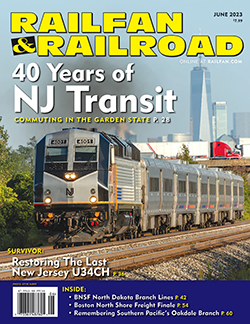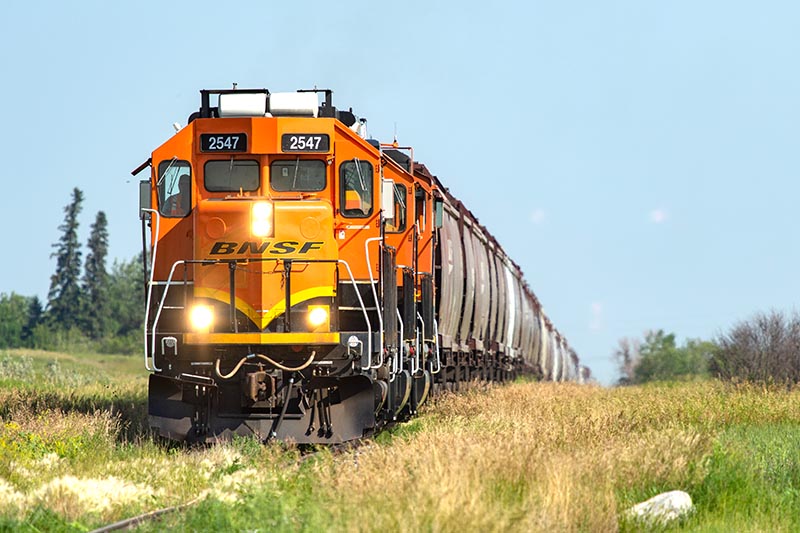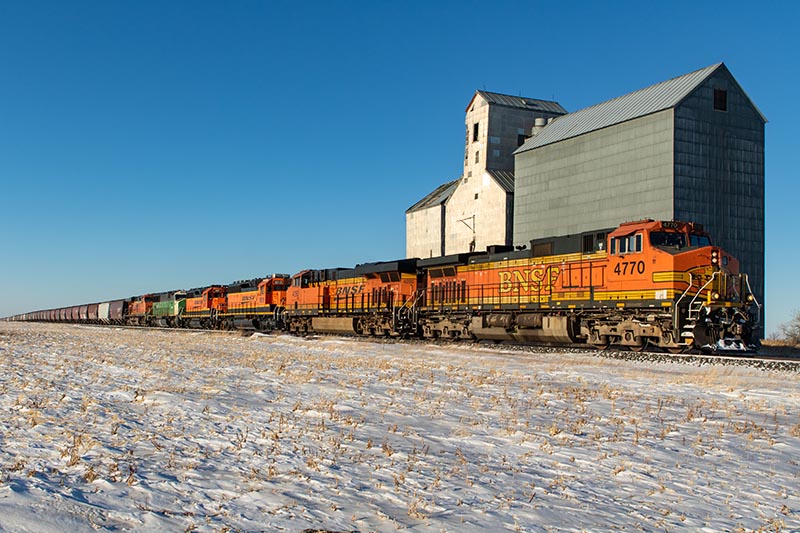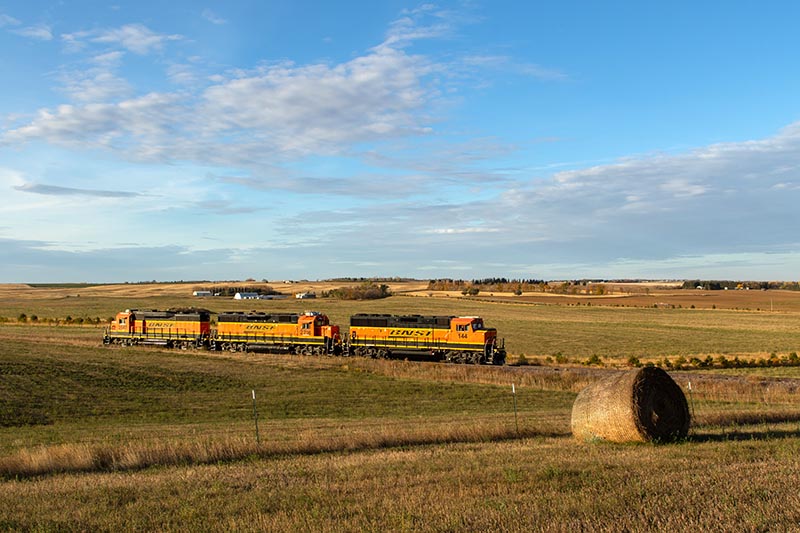 by Jeremy Seimbida/photos by the author
by Jeremy Seimbida/photos by the author
A century ago in North Dakota, a vast empire of branch lines reached across the fertile prairies of the Peace Garden State; it looked much like a comb of feeders to the main line. Their beginning was a carefully calculated investment as Great Northern Railway marched to the Pacific Northwest. The state, especially in the north, was not rich in easily recoverable natural resources such as coal or iron ore, so any traffic that was to be generated would have to be intentionally developed. Over time, this deliberate investment would generate significant traffic. As decades wore on, GN put additional emphasis on agriculture and obtained new traffic sources.
When the Staggers Act deregulated the railroads, the empire of GN’s former branch lines began to shrink — some to abandonment, others to spinoff sales to short line operators. Today, GN’s surviving empire of branch lines is a mix of mothballed out-of-service trackage, short lines, and updated secondary track capable of supporting the biggest power and heaviest gross rail loads of the main lines. We’ll explore the birth of the state’s branch system and GN’s deliberate investment in agriculture and obtaining alternative traffic. We’ll also evaluate the effect of the deregulation of the railroads and retrenchment as it applies to the branches, and, finally, have a brief discussion of what still exists and what a modern railfan can discover visiting selected former GN branches in the state.

ABOVE: Looking more like a modern-day Milwaukee Road main line, a storage train is shoved over what looks like the crest of the grade, but the Grenora Sub has more 1 percent climbing yet to go on July 11, 2021. The train is at about milepost 7 with GP39-3 2547 in charge.
The Beginnings of an Empire
When GN reached the coastal waters of the Pacific Ocean in 1893, it was largely a transcontinental with more than a thousand miles of main line and only three major traffic centers beyond the terminus cities. Population was light among the middle states on the main line — Idaho, Montana, and, of course, North Dakota. James J. Hill, who pushed the main line west out of North Dakota under St. Paul, Minneapolis & Manitoba, now named this empire Great Northern Railway and knew these millions of acres of unestablished and unoccupied land would need to be developed to ensure prosperity.
Max Bass, a GN immigration official (a North Dakota town bears his name today — Maxbass — but the GN branch that once served it was abandoned in 1993), was tasked with populating the prairies. He especially teamed with religious groups (because like-minded groups could more easily weather difficult plains living and morale could be better protected), bringing the first few Mennonites to the state in 1891. The first 350 German Baptists from Indiana and Ohio relocated to Cando, N.D. (on the present-day BNSF Rolla Subdivision), in 1894. From humble beginnings, the number of settlers Bass brought to the state reached almost 11,000 by 1900. Special GN immigrant trains carried some 95,000 settlers to North Dakota between 1896 and 1898, with five million acres of federal land occupied.

ABOVE: A loaded Northgate to Minot eastbound grain train pulls past the derelict elevator at Hartland, N.D., at the maximum allowable track speed of 25 mph on February 15, 2021. A group of marooned EMDs hitches a deadhead ride east behind Dash 9-44CW 4770 due to extreme cold weather shutdowns on the branch.
As early as 1900, Hill launched a series of programs aimed at agriculture improvement. Hill understood the importance of farmer success as pivotal to the success of the railroad. Experts on dry farming and soils teamed up to develop demonstration fields, as well as study diversified agriculture in the prairies, especially North Dakota. Demonstration trains toured the system starting in 1910, touting the newest crops, techniques, and products to entice farmers into western agriculture.
Hill used GN and even personal resources to support agricultural experimentation stations, testing everything from corn better suited to the arid plains and sugar beets in the Red River Valley, to hog cholera treatment and prevention. Whether cereal crops or livestock, Hill’s GN invested heavily into farmers. When harvest time loomed, starting in 1893, GN helped recruit seasonal workers and transported them to the farms at a discount…



